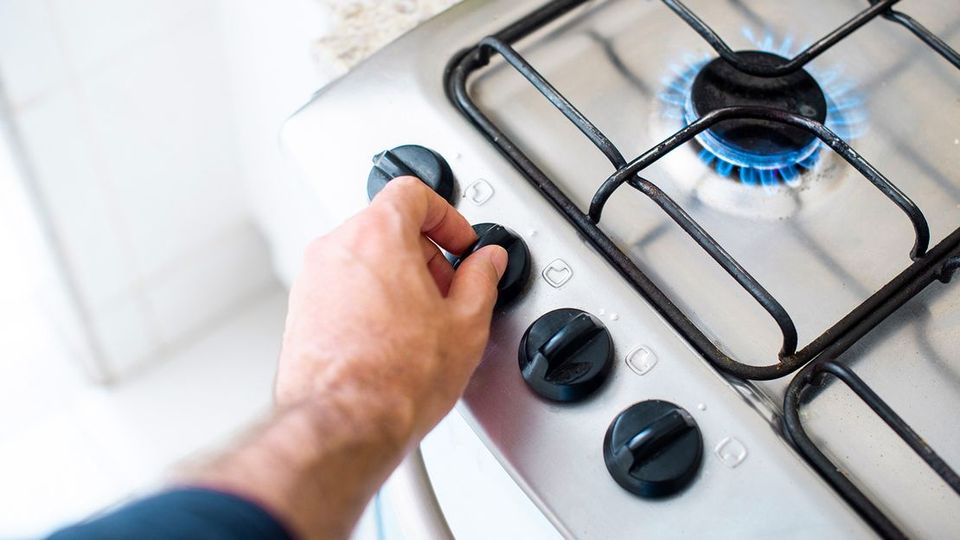Gas Knew, Too + Everything You Need to Know on Climate This Week

As the whole gas stove "culture war" rages on, it's important to remember that gas companies have known for over a century (?!) that breathing gas in your home is quite harmful to human health. Seems like a no-brainer right? But I know I was definitely of the mind that cooking with gas was superior for years without really questioning it and I know I wasn't alone. Here is a not-at-all-exhaustive list of the various times the gas industry told on itself throughout history (huge shout-out to Climate Nexus for providing some of the research for this list!)
- 1909: The Proceedings of the Natural Gas Association of America notes on page 193 that Association President Mitchell said "the association will go on record" that "no gas of any kind should go into a heating stove without a flue connection." The group concluded during their annual meeting to “condemn any appliance installed in such a manner as to permit the products of combustion to enter the room."
- 1928: American Gas Association Testing Laboratory was already looking for ways to shift blame from gas to oven manufacturers and/or consumers. In its own testing lab the AGA found that carbon monoxide poisoning was indeed happening as a result of gas stoves in the home, but blamed it on "incomplete combustion," which they attributed to a variety of causes: poor manufacturing, consumers purchasing old or refurbished appliances, and faulty installation.
- 1947: MIT research chemist Richard Berger wrote in "To Prevent Cancer" that " the housewife who doesn’t smoke may make most of her carcinogenic contacts with coal tars from the kitchen stove (when coal or gas fired)" and that "Measured in terms of freedom from generation of carcinogenic irritants, electric heat (because it has no combustion products) is ideal for cooking and heating."
- In 1977, ConEdison undertook a study of the impact of gas stoves on indoor air quality in New York City. At the time the utility provided gas service to about 1.2 million customers in Westchester, Manhattan, the Bronx, and portions of Queens. About 700,000 of those customers lived in apartments or houses that had gas ranges but not any (gas) heating appliances, so the only source of gas emissions in the home were their stoves. High levels of indoor carbon monoxide and nitrogen dioxide were detected, which the utility noted could result in "measurable health impacts," but blamed on misuse of the ranges, particularly the number of people who were using ranges for supplemental heating, or keeping a pot of water boiling on the range for humidity.
- 1977: researchers found "boys and girls from homes in which gas was used for cooking" had "more cough," chest colds and bronchitis, and "concluded that elevated levels of oxides from nitrogen arising from the combustion of gas might be the cause of the increased respiratory illness." A follow-up in 1979 concurred: "The prevalence of one or more respiratory symptoms or diseases was higher in children from homes where gas was used for cooking than in those from homes where electricity was used."
- 1983: The twin asthmatic influence of tobacco smoking and gas cooking was documented: "exposure of children during the first two years of life to gas cooking or cigarette smoking appears to be associated with an increased risk of hospitalization for respiratory illness."
- 1991: Italgas talks about the industry's longstanding role leading the charge on research into indoor air quality, and the need for it to continue to do so. It's clear in this report that even after industry-created requirements that helped to reduce leaks in the home during the 1980s, stoves and other gas appliances are having a major negative impact on air quality.
- A 1994 study from the American Society of Heating and Refrigeration reads: "One of the most serious indoorair quality (IAQ) problems in residences is the possibility that occupants will get sick or die from carbon monoxide (CO) poisoning caused by the release of CO from a variety of combustion appliances. Thus combustion safety testing has become increasingly common in weatherization programs. Most of the emphasis has been on unvented space heaters and furnace and water heater backdrafting, but there is now experience with measurement of surprisingly elevated indoor CO levels from gas ranges. This is important because of the widespread use of unvented gas ovens for cooking and for space hearing . Traditionally, few people have considered gas ovens to be a major source of CO, even though their exhaust products are vented directly into the indoor air of a residence."
Also worth noting: The controversy over gas stoves being bad for our health is not new.
Although the recent media and political attention on gas stoves can be traced back to Rebecca Leber's work at Mother Jones, similar stories ran in the 1980s, with similar responses from the industry. That time it was kicked off by a series of studies that made their way into the National Academy of Sciences 1981 report, "Indoor Air Pollutants," which was unequivocal about the health threat posed by gas stoves:
"Unvented combustion appliances, especially gas stoves, are major sources of indoor air pollution," they wrote. And later "Indoor carbon monoxide concentrations are often higher than corresponding outdoor concentrations. High indoor concentrations may be attributed to emissions from such sources as gas cooking facilities, attached garages, faulty furnaces, and cigarette smoking."
Upon the report's publication, Dr. Theodore Sterling, a lifelong scientist-for-hire for the tobacco industry went to bat for the gas industry, writing several letters accusing the NAS of bias and asking that the report be edited. "In my experience the discussion of high levels of carbon monoxide and oxides of nitrogen resulting from gas range use is a highly objectionable topic with utility corrpany executives and managers who firmly deny that such high levels accompany routine use of gas ranges. For this reason I regret that NAS has taken a partisan position in this matter."
The report was not edited and the media more or less ran with the story that gas stoves were health dangers. The industry fought back hard, spending much of the 1980s trying to rebut the research and defend the gas stove at every turn, just like they're doing today. In a 1985 Washington Post article entitled "Sealing in the Fumes," for example, gas stoves are listed amongst the many sources of indoor air pollution in our homes. The American Gas Association's response reads exactly like their responses to more recent reporting around the health risk posed by gas stoves: "Research does not show the electric range to be an indoor air pollution control device," AGA's VP of communications at the time John W. Clark wrote in a letter to the editor. "The author ignores the facts and the overall impacts of using electricity. The electric range is neither cost effective nor a solution to any energy or environmental concern."
Everything You Need to Know or Read on Climate This Week
- UAE sparks furious backlash by appointing Abu Dhabi oil chief as president of COP28 climate summit (CNBC)- Could this finally be the moment the world wakes up and realizes having oil execs help write IPCC reports and run COP is a bad idea? Here's hoping!
- "Achieving Zero Emissions with More Mobility and Less Mining," a new report from the Climate and Community Project, finds that reducing US car dependency can significantly lower the lithium demand of a decarbonized transportation system. Compared to the most lithium-intensive scenarios– in which EV battery size grows and US car dependency remains stable– the report's modeling reveals the most ambitious policies, including best-case recycling, could reduce lithium demand by up to 90 percent in 2050. The report also reviews the social and ecological effects of lithium mining, illustrated by four case studies in the US Southwest, Portugal, Chile, and Argentina.
- Oil refineries are polluting US waterways. Too often, it's legal. (Grist) While the Environmental Protection Agency, or the EPA, is legally required to regulate pollutants and impose penalties, a new study released Thursday by the Environmental Integrity Project maintains that hasn’t been happening. And then there's the fact that the EPA only regulates 10 of the dozens of pollutants refineries emit.
- Oil companies are once again posting record profits. Today, Chevron announced a record-setting $36.5 billion annual profit for 2022 and an unprecedented $75 billion stock buyback plan.
- This Company Is Suing the U.S. Over the Keystone Pipeline Cancellation (The New Republic) - I've been ranting about international arbitration for years and I'll probably never stop. It's one of the greatest threat to action on climate change, a system that is beyond any government's control, that allows companies to sue countries for anything that threatens their profits like...I don't know...climate policy? In this piece Kate Aronoff looks at one recent claim in perticular, in which Canadian company TC Energy is claiming the U.S. owes it billions of dollars for canceling the Keystone XL pipeline. It's pretty unusual for a country like the US to be hauled before an arbitral tribunal, usually it's a small Global South country that dared to pass an environmental or human rights law, but no matter what country is involved it's an incredible erosion of sovereignty. (You can read more about this here, or listen to one of our podcast episodes on it here or here).
- ‘If you win the popular imagination, you change the game’: why we need new stories on climate (The Guardian) The legendary Rebecca Solnit on the need for stories that highlight the human ability to make big changes and the danger of those that feed into the idea that we'll never be able to change enough, quickly enough, to save the planet.
- Tripping for the planet: Psychedelics and climate activism (Atmos) Amber X. Chen explores the psychedelic renaissance’s effects on environmental activism, and how hallucinogenic drugs like LSD and psilocybin, and ancient plant medicine like ayahuasca, can stir change within individuals — and ultimately galvanize social movements.





